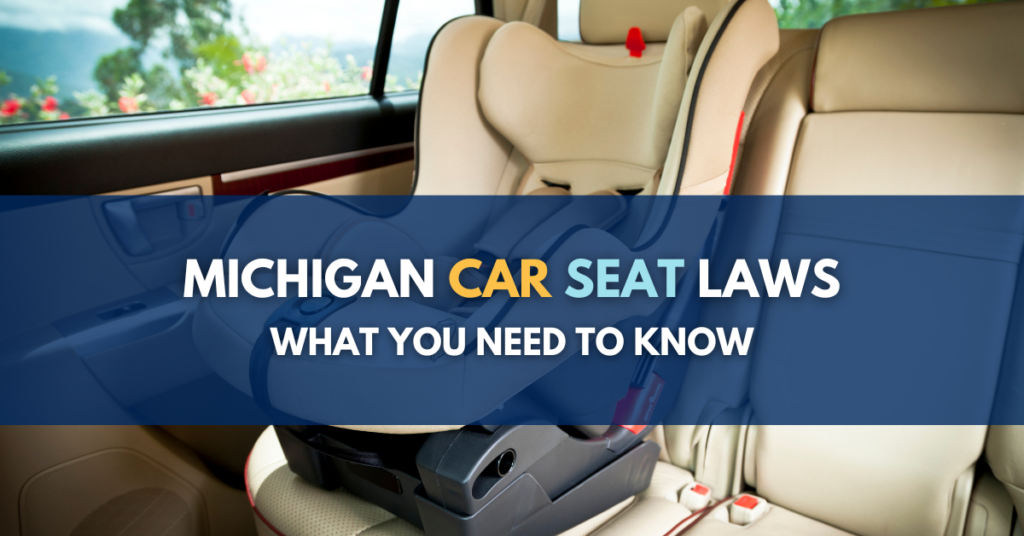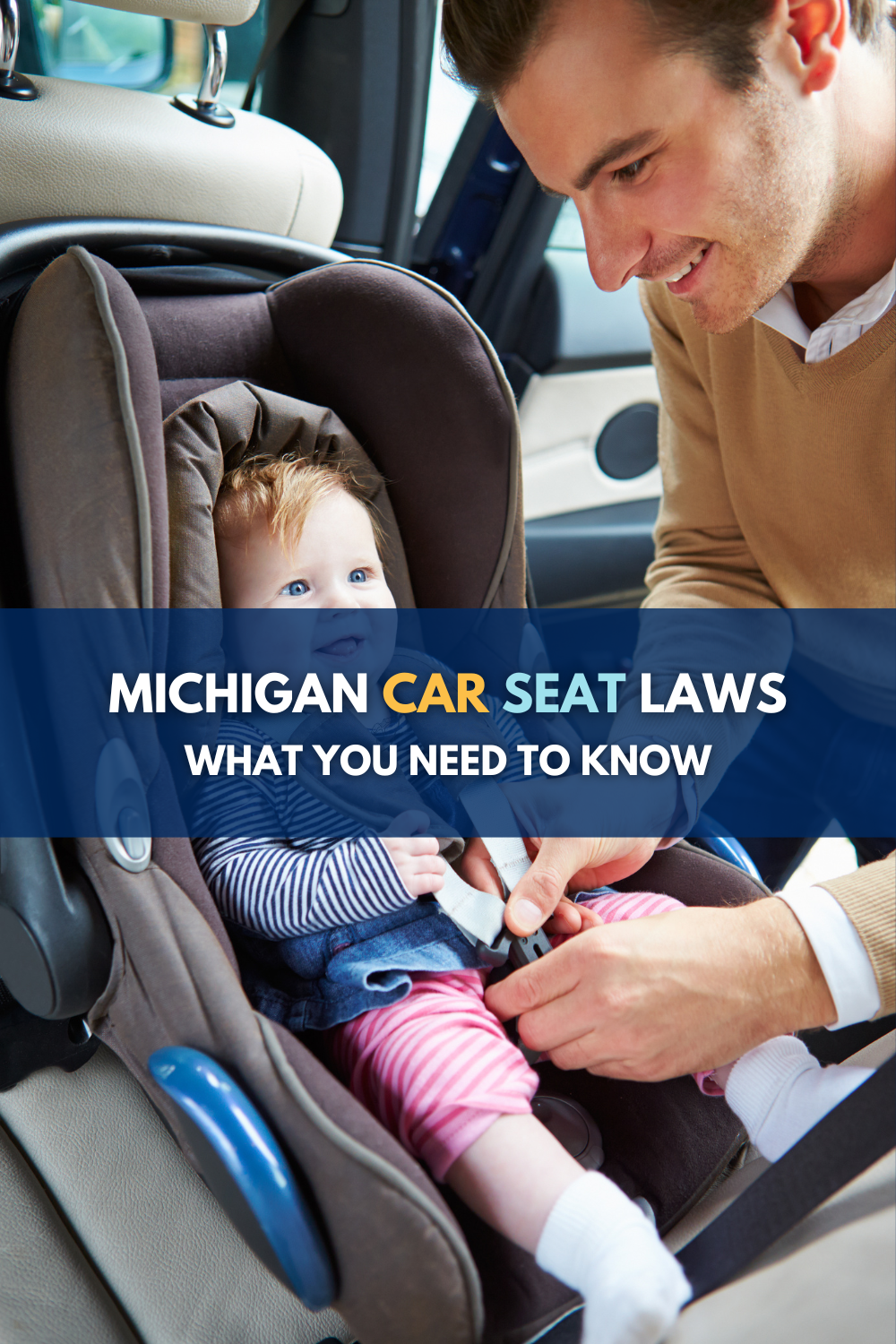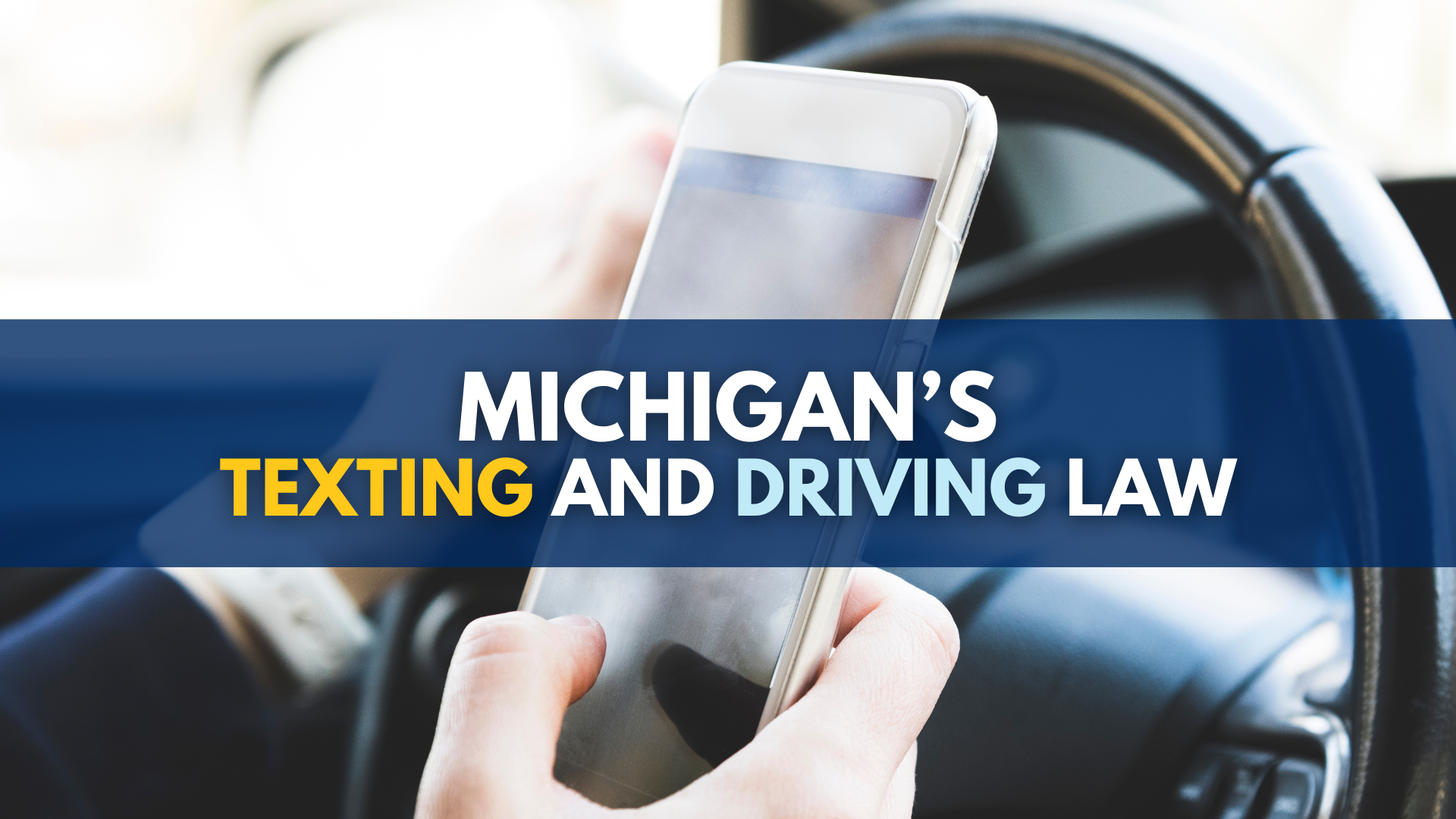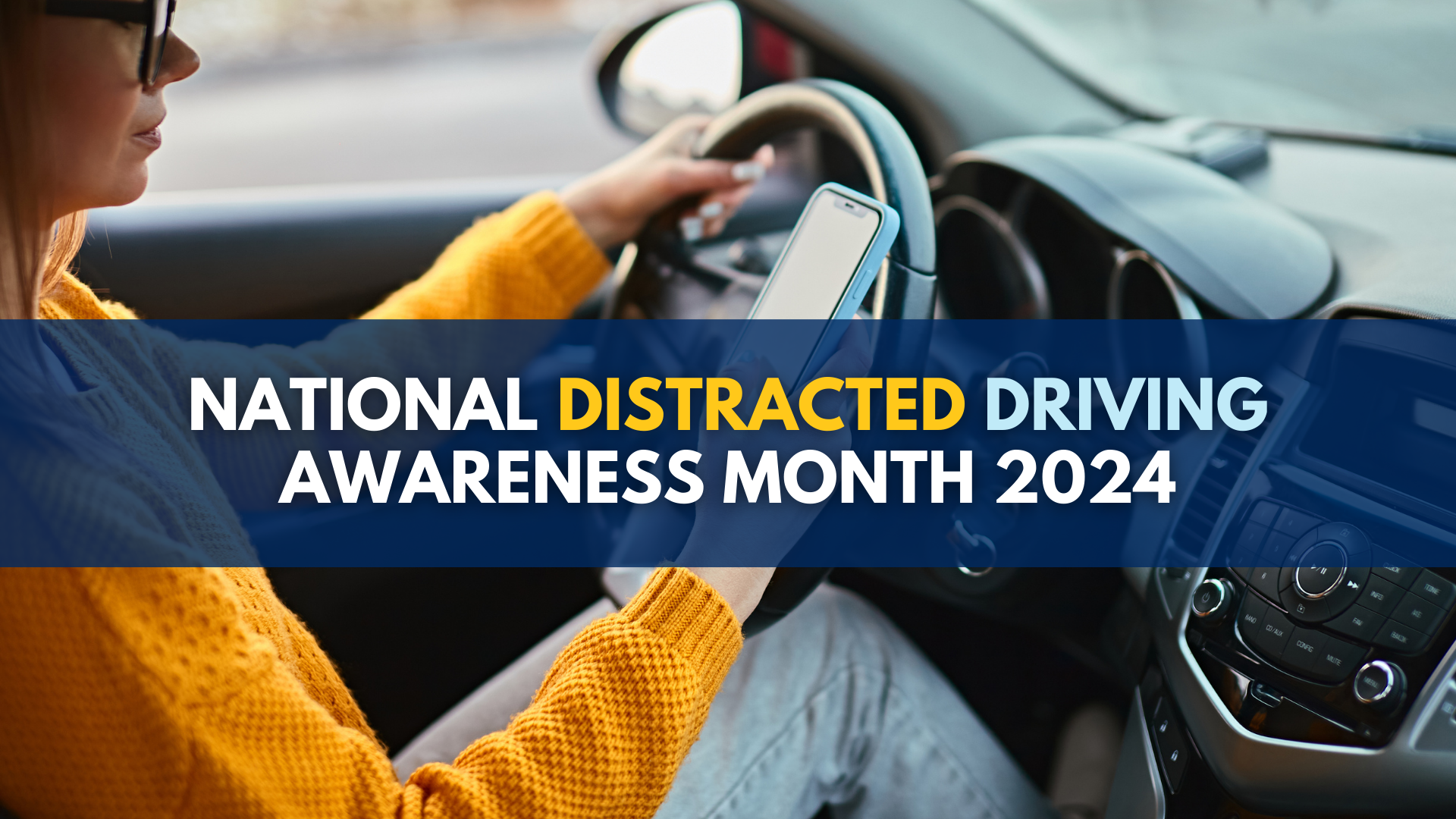
This blog is meant to help parents become familiar with the Michigan car seat laws.
Michigan car seat laws are meant to help us safely protect our children.
Car crashes are a leading cause of death for children ages 1 to 13. According to government data, 40% of the child passengers who were killed in car accidents in 2021 were “unrestrained,” i.e., not secured in any child restraint system. Of the total number of child fatalities resulting from car crashes in 2021, the “unrestrained” percentages based on age were as follows: 40% of infants; 27% of kids 1 to 3; 41% of kids 4 to 7; 36% of children 8 to 12; and 59% of children 13 to 14. (Sources: NHTSA, “Car Seats and Booster Seats” page; NHTSA, Traffic Safety Facts – 2021 Data, “Children,” May 2023, pages 1 and 6)
These statistics are not meant to scare parents or anyone else who may have young children as passengers in their vehicles. They are to show that many child fatalities from car accidents are preventable if children are safely secured in child restraint systems.
As a car accident lawyer who focuses his practice on helping people injured in serious car accidents, I’ve seen firsthand how devastating it can be for parents to lose a child. There is nothing more tragic than a car accident that takes the life of a child.
This blog reviews the Michigan car seat laws and what the mandates require as well as tips to keep our children safe.
What are the car seat laws in Michigan?
According to Michigan car seat laws, children under the age of 8 and less than 4 feet 9 inches in height must ride in a car seat or booster seat. However, once a child reaches the age of 8 or grows to be taller than 4’9”, then he or she no longer needs to ride in them.
Seat belts, which are also referred to as safety belts, must be worn by all vehicle drivers, passengers riding in the front and any child passengers under the age of 16, regardless of whether they’re seated in the front or the rear.
What are the laws based on a child’s age?
Because the Michigan car seat laws are based on children’s ages, I will discuss what the laws require for kids at the following ages.
Michigan car seat laws for child passengers under 4 years of age:
- A “child less than 4 years of age” must be properly secured in a “child restraint system” ( that meets federal safety requirements. (MCL 257.710d(1))
- Kids under 4 must ride “in a rear seat” (when there is a rear seat). (MCL 257.710d(2))
- If all rear seat space is already occupied by child seats containing other children under 4, then a child under 4 and his or her child seat can be secured in the front seat. (MCL 257.710d(2))
Michigan car seat laws for child passengers aged 4 and older, but younger than 8 years of age:
- For kids who are aged 4 and older, but less than 8, AND who are “less than 4 feet 9 inches in height” must be properly secured in a “child restraint system in accordance with instructions from the manufacturers of the child restraint system and the vehicle as well as with federal safety requirements”. (MCL 257.710e(3)(b))
Michigan car seat laws for child passengers under 16 years of age:
- Children who are no longer required to ride in a child restraint system, and who are less than 16 years of age must wear “a properly adjusted and fastened safety belt.” (MCL 257.710e(5))
- The “safety belt” rule above applies to: (1) kids who are 4 years of age and older (but less than 8) AND who are taller than 4’9”; and (2) kids who are 8 years of age or older (but less than 16).
- If there are more children in a motor vehicle than there are safety belts, then “a child 8 years of age or older but less than 16 years of age for which there is not an available safety belt” must be seated in the rear seat, i.e., “seated in other than the front seat of the motor vehicle.” However, if the motor vehicle is “a pickup truck without an extended cab or jump seats” and front seat safety belts are being used, then the child can ride “in the front seat without a safety belt.” (MCL 257.710e(5))
Michigan car seat laws for child passengers 16 years of age and older:
If a child 16 or older is riding in the front seat (or he or she is the driver), then the laws state he or she must “wear a properly adjusted and fastened safety belt . . .” (MCL 257.710e(3))
Although it doesn’t specifically address the issue, one could argue that a child who is 16 or older who is riding in the rear seat is not obligated to wear a safety belt.
However, obligated or not, it’s safe, advisable and responsible for 16 year olds – or anyone – to wear a safety belt when riding in the rear seat.
When can a child sit in the front seat in Michigan?
A child who is 4 years of age or older can sit in the front seat in Michigan. However, if the child is younger than 8 and is less than 4’9” tall, then he or she must be positioned in a car seat or booster. Children under 4 years of age can sit in the front seat only if there are no rear seats available.
If a child under 4 is placed in the front seat, then the front passenger air bag must be deactivated if the child is in a “rear-facing child restraint system.” (MCL 257.710d(2)
According to the Michigan car seat laws, generally, children younger than 4 are required to be positioned in a “child restraint system in a rear seat, if the vehicle is equipped with a rear seat.” (MCL 257.710d(2))
What do the Michigan car seat laws say about seating children 4 years of age and older?
Unfortunately, Michigan car seat laws are silent about where kids 4 years of age and older must be positioned in the vehicle, i.e., whether they must be seated in the rear seat or whether they may be seated in either the rear or the front seat.
As I mentioned above, the only specific legal requirement is that children under the age of 4 must be seated in a rear seat.
Importantly, the American Academy of Pediatrics recommends that:
“All children younger than 13 years should be restrained in the rear seats of vehicles for optimal protection.”
Are there motor vehicles for which the Michigan car seat laws do not apply?
Yes.
According to Michigan car seat laws, the rules for children under the age of 4 and for rear-facing child seats do not apply to buses, school buses, taxicabs, mopeds, motorcycles and any “other motor vehicle not required to be equipped with safety belts under federal law or regulations.” (MCL 257.710d(3))
Additionally, the rules for children 4 years of age and older and under 16 do not apply to vehicles made before 1965, buses and school buses, motorcycles, mopeds and motor vehicles that are “not required to be equipped with safety belts under federal law.” (MCL 257.710e(1) and (2))
Are there other exceptions to the Michigan car seat laws?
Yes. For all child passengers, there may be exceptions to the laws for physical and/or medical reasons. (MCL 257.710d(6); 257.710e(1)(e))
What does the law say about the types of child’s seats that have to be used?
The only mention in the Michigan car seat laws of any type of child seat is the discussion about rear-facing child restraint systems and airbags. Specifically, it provides that if circumstances require that “a child in a rear-facing child restraint system” be positioned in the front seat, then “the front passenger air bag” must be deactivated. (MCL 257.710d(2))
However, the Michigan Office of Highway Safety Planning offers the following safety advice:
- Rear-facing: Infants and toddlers should ride in rear-facing car seats as long as it is possible for them to do so, i.e., until they reach the car seat’s height and weight limits, as specified by the manufacturer.
- Forward-facing: Children who have outgrown their rear-facing seats should use forward-facing seats (with a harness) as long as possible until they reach the seat’s height and weight limits.
- Booster seats: Children who have grown too big for rear- and forward-facing car seats should use booster seats with a belt-positioning feature. They will continue with the booster until the car’s lap/shoulder belts fit properly – which is generally around the time a child turns 8 years of age and/or exceeds 4 feet 9 inches in height.
- Safety belts: Children should use the vehicle’s lap/shoulder safety belts once they have outgrown the child car seats and the booster seats.
Injured in a car accident in Michigan? Call now!
If you were injured in a car accident in Michigan, call now (855) 781-7747 for a free consultation with one of our experienced car accident lawyers. There is no cost or obligation. You can also visit our contact page or use the chat feature on our website.
Michigan Auto Law is Michigan’s largest and most successful law firm that specializes exclusively in helping people who have been injured in auto accidents.
Our secret? Our car accident attorneys deliberately handle fewer cases than other personal injury law firms. This allows us to focus more time and attention on our cases.
Unlike other law firms, our auto accident attorneys are never too busy to promptly return phone calls and answer questions.
We have more than 2,000 5-Star Reviews that reflect this care and attention to detail.
More importantly, this client-focused approach leads to better and faster settlements for our clients. Michigan Auto Law has recovered more million-dollar settlements and trial verdicts for motor vehicle accidents than any other lawyer or law firm in Michigan. We’ve also recovered the highest ever reported truck accident and car accident settlement in the state.
Call now so we can start making a real difference for you.
(Source: Michigan Office of Highway Safety Planning, “Car Seat Basics” flyer)







You need a traffic ticket and the offense is ACCIDENT 3:30..
WHAT IS THE DESCRIPTION OF THAT OFFENSE?